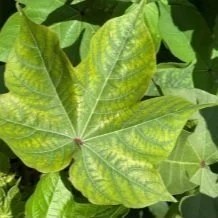For many cotton growers, hurricane/tropical storm Francine has thrown a wrench in cotton defoliation and harvest plans. Prior to Francine, there were many reports of cotton lodging, or “laying over”. This was most likely due to the fruit shed event Louisiana experienced in August. After shedding fruit in the lower canopy, cotton plants became heavier further up the canopy as bolls continued to develop and mature. As the bolls grew, the plant became heavier.
Read MoreThe 2024/25 U.S. corn outlook calls for smaller supplies and a modest decline in ending stocks. Projected beginning stocks for 2024/25 are 55 million bushels lower based on increases in exports and corn used for ethanol for 2023/24. Corn production for 2024/25 is forecast at 15.2 billion bushels, this estimate is a 39 million bushel increase from last month’s projections. This production increase was the result of a 0.5-bushel increase in yield from previous estimates to 183.6 bushels per acre. Harvested area for grain is unchanged at 82.7 million.
Read MoreLouisiana corn for grain production is forecast at 85.0 million bushels, up 3 percent from August 1 forecast but down 29 percent from 2023. Based on conditions as of September 1, yield is expected to average 191 bushels per acre, up 6 bushels from last month and up 16 bushels from last year. Harvested acreage for grain is estimated at 445,000 acres, down 235,000 acres from 2023.
Read MoreAgriculture is grappling with uncertainty as political turmoil, extreme weather patterns, and global conflicts converge with a pending new farm bill and rising production costs, all set against the backdrop of depressed commodity prices.
Read MoreEach crop year presents a different set of challenges, prompting many producers to recall the number of experiences they have had in farming as opposed to how many years of experience they have farming. The 2024 growing season is running ahead for most by about a week based on USDA National Agricultural Statistics Service Information reports released the end of July. Some regions are running as much as two weeks ahead of the last five-year average. This certainly calls for an evaluation of your harvest aid strategy and program.
Read MoreConfused over this year’s ever-shifting cotton acreage and production numbers? We are, too. So we asked Dr. O.A. Cleveland to explain.
Read MoreThe cotton market’s 67-cent price resistance continues to be tested day after day.
While carryover stocks are declining, the world major exporters – Brazil and the U.S. – have more than sufficient crops to fill the import needs of major cotton consumption countries. Weak demand continues to haunt the market, and the combination of these two factors threatens lower prices.
Read MoreIt’s dry…we went from the end of July when we were trying to look for a break in the rains to now where we’re looking for a rain. We’re trying to finish out the last of these crops, and it’s not going easy.
It depends on where you’re at, on how the crops are looking…the late planted beans are looking really good, but this dry weather, as they move into pod filling stages, is really taking a toll on them. A really good rain would really set this crop up for a good finish.
Read MoreThings are looking pretty good…we’re in the middle of a dry spell right now, which is great for corn harvest, great for wrapping up a cotton crop right now. Soybeans are needing some water, but as long as we’ve got irrigation, we’ll hang in the game a little while. As mentioned, corn harvest is getting into full swing, most everybody’s going to at least get started this week, and there are those who have been started, primarily south of I-20 for the last 10 days or so.
Read MoreRonald Rawls planted his first crop of cotton in 1979. Since then, his three sons Neal, Ryan and Chad have joined him in the operation as fourth-generation growers, and they have excelled at adopting new technologies and at working hard to keep growing the farm.
Read MoreThis report contains supply and demand use estimates for the corn, soybean, rice, and cotton markets.
Read MoreAs the cotton season progresses in Louisiana, there have been several reports of potassium deficiency. Potassium deficiency can weaken the plant, making it easier for plant pathogens to attack. It is very common to see fungal leaf spots on potassium stressed plants. Although pre-mature defoliation due to disease is possible, it is most likely the nutrient deficiency that is the leaf-dropping culprit.
Read MoreAs Louisiana cotton producers move into cotton harvest season, Louisianians will see an influx of used and custom cotton harvest equipment moving into and through the state. To protect our cotton producers from the reintroduction of boll weevils, the Louisiana Department of Agriculture and Forestry (LDAF) implements restrictions for all cotton harvest equipment entering the state.
Read MoreAs the cotton season progresses in Louisiana, there have been several reports of potassium deficiency. Potassium deficiency can weaken the plant, making it easier for plant pathogens to attack. It is very common to see fungal leaf spots on potassium stressed plants. Although pre-mature defoliation due to disease is possible, it is most likely the nutrient deficiency that is the leaf-dropping culprit.
Read MoreWhen you think of recycling, you likely think of things like aluminum cans, cardboard boxes, and glass bottles. But have you considered recycling denim?
Read More













